Inviting Creativity Home
April 2, 2020
“Closed in a room, imagination becomes my universe.” ~Criss Jami
Although these difficult times have pushed us all indoors, unexpected restrictions can still provide new opportunities. It goes without saying that keeping focussed on something constructive like painting or drawing can help improve your general wellbeing. With this in mind, we’re putting together a series on how people are using their imaginations and extra time at home to make art.
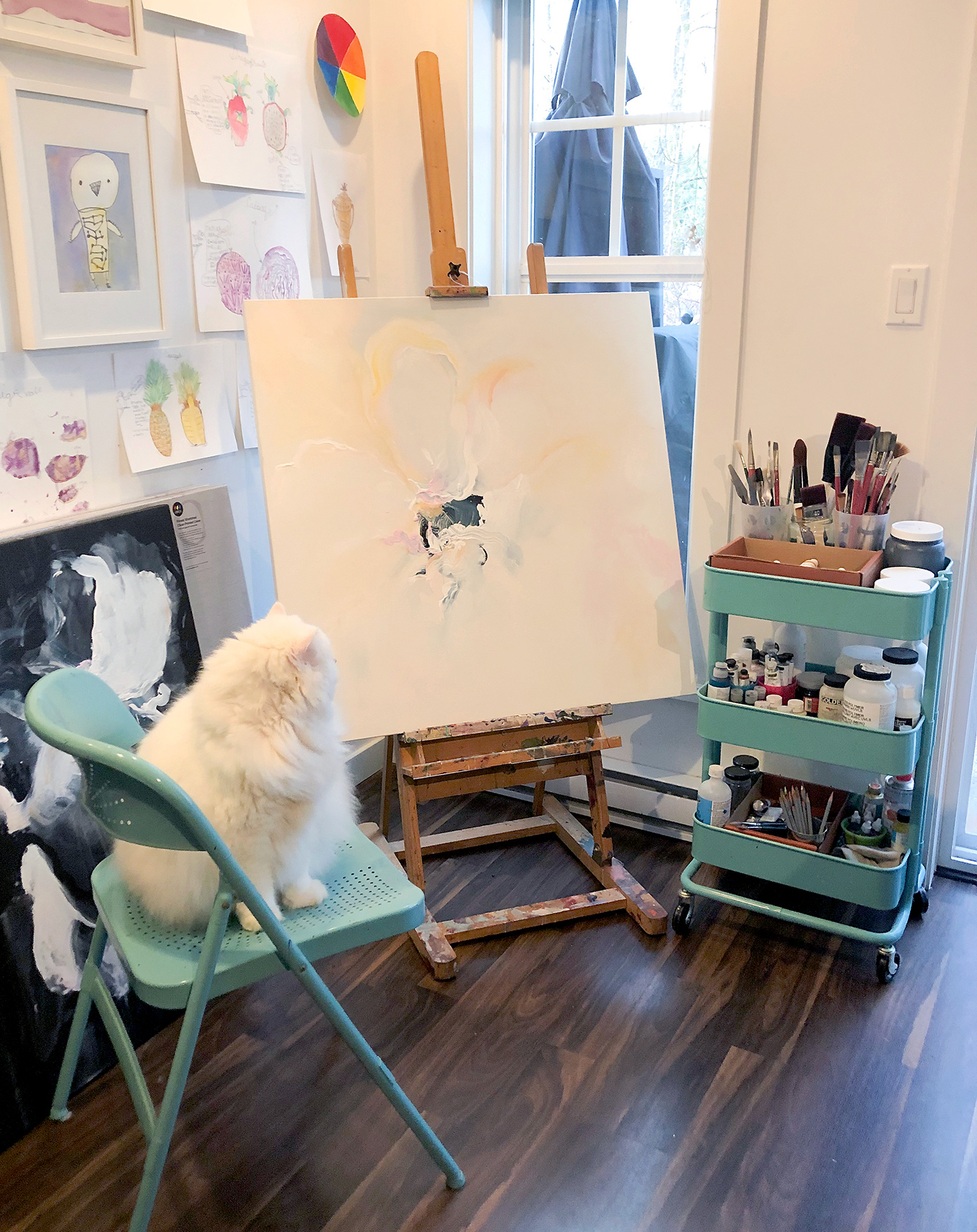
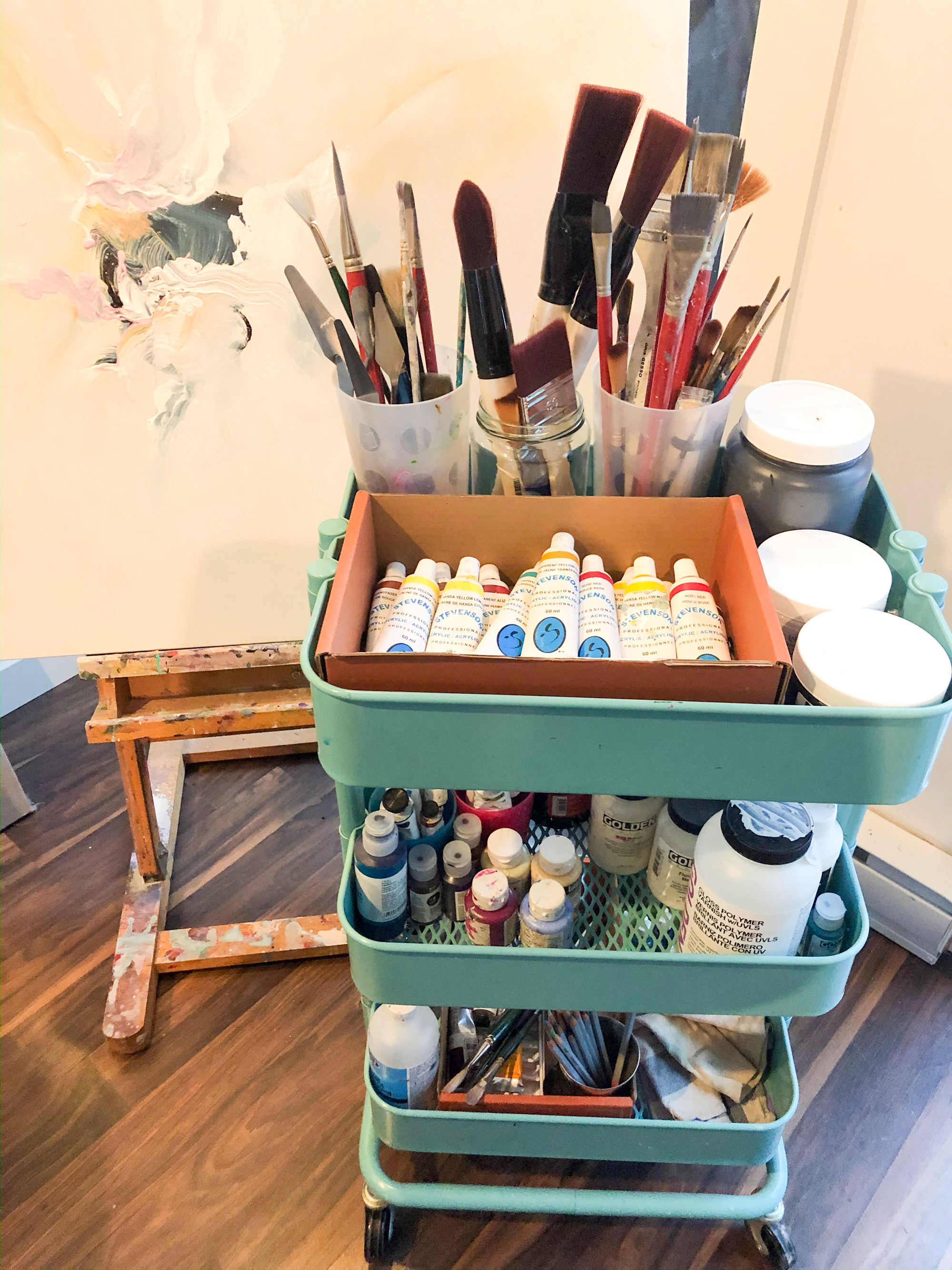
Dayna Genvieve created her studio/home schooling area in a well-lit corner of her kitchen, making it easy for multitasking!
To kick things off, our focus is on creative spaces. With your input, we’ve compiled some ideas on how to make a workable art area in your home, no matter how much (or how little) room you have.
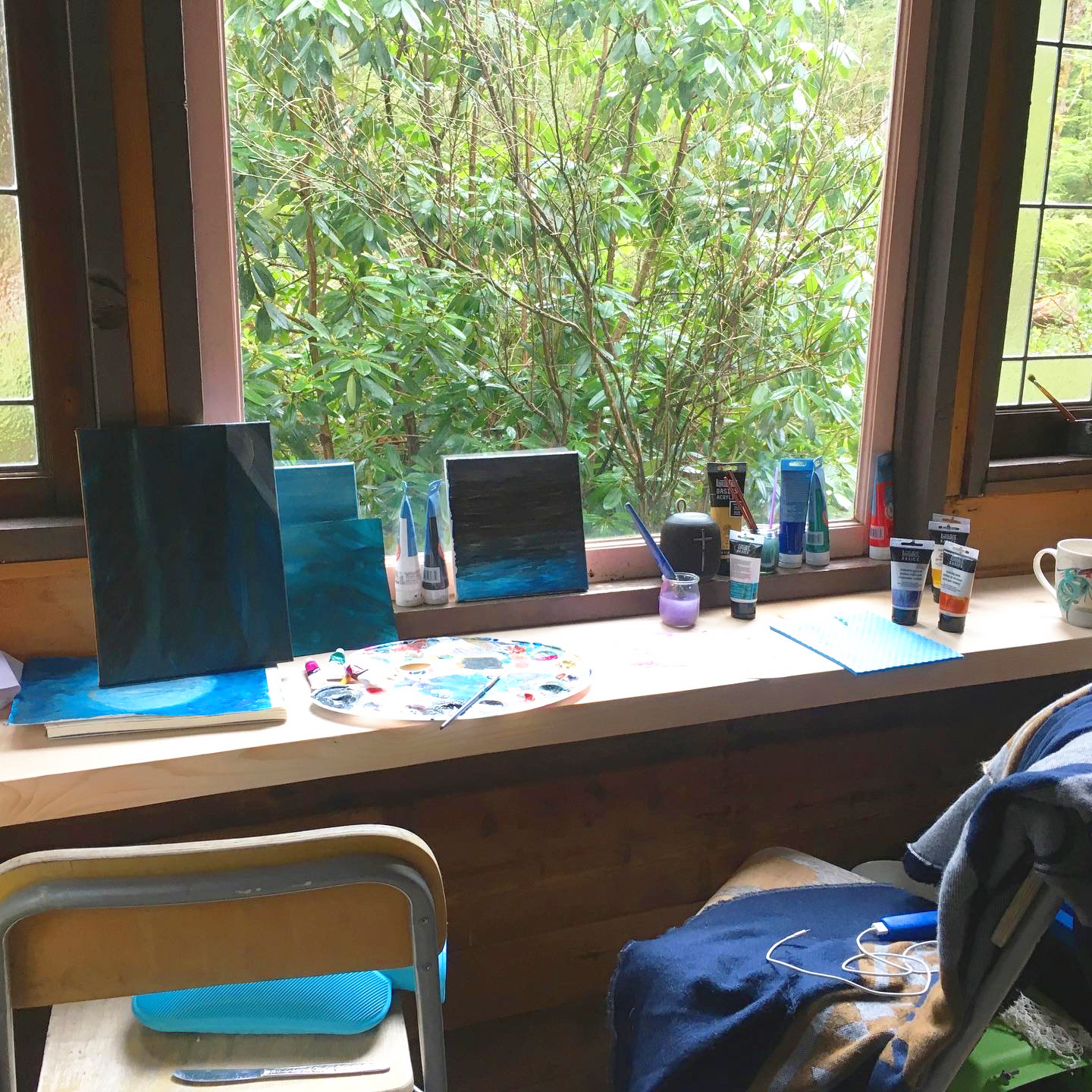
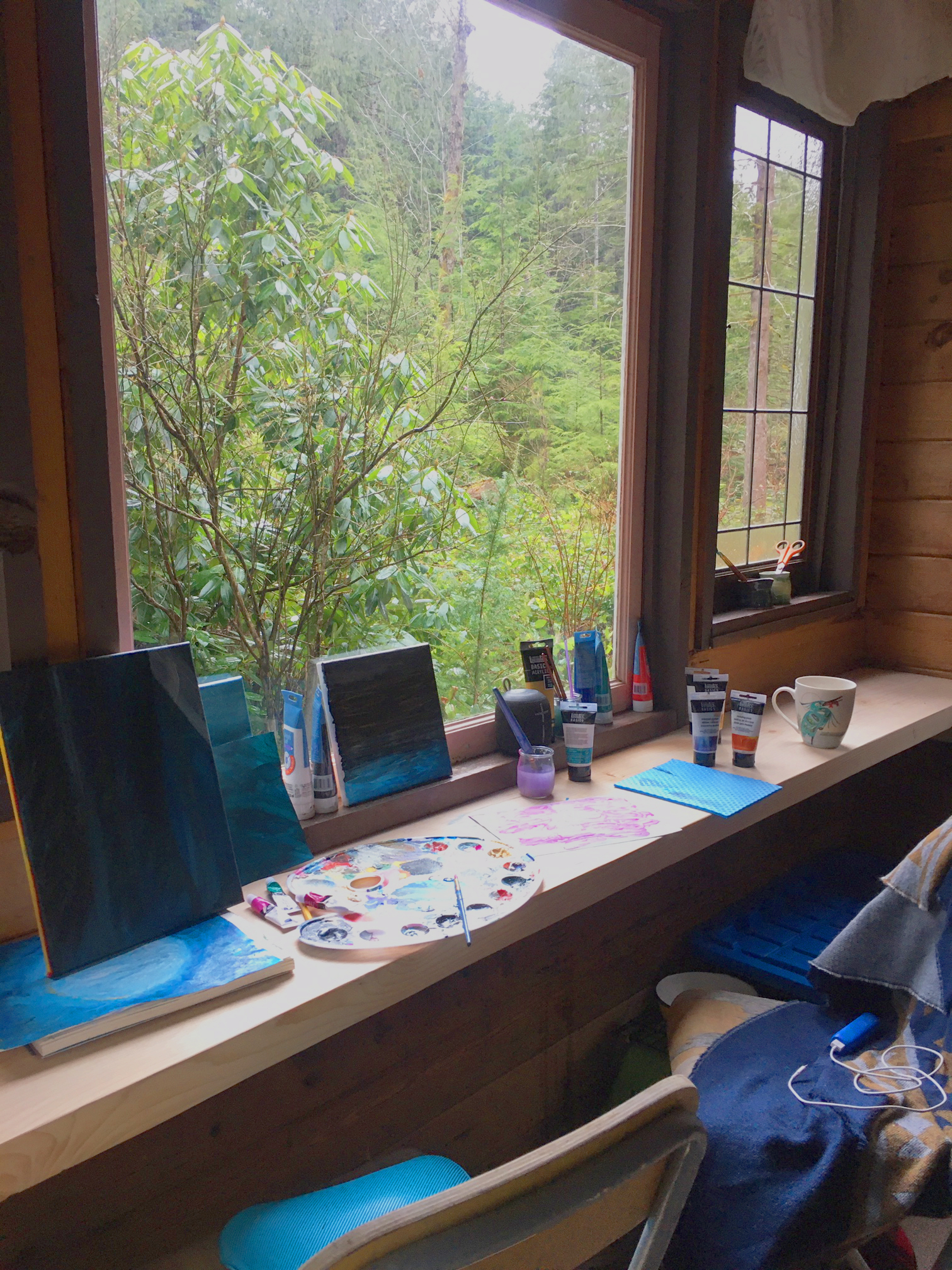
Lisa Large has created a dedicated workspace by transforming a storage shed into her own little studio.
Be it a storage shed like Lisa Large’s, Dayna Genvieve’s joint homeschooling/kitchen art space or a counter-top like many people are using, finding a suitable spot is paramount. This doesn’t have to be a permanent place, just somewhere you can work for a few hours. Try to choose a perch with good natural light, near a window or an electric light source (being close to the latter will come in handy if you dabble through into the evening).
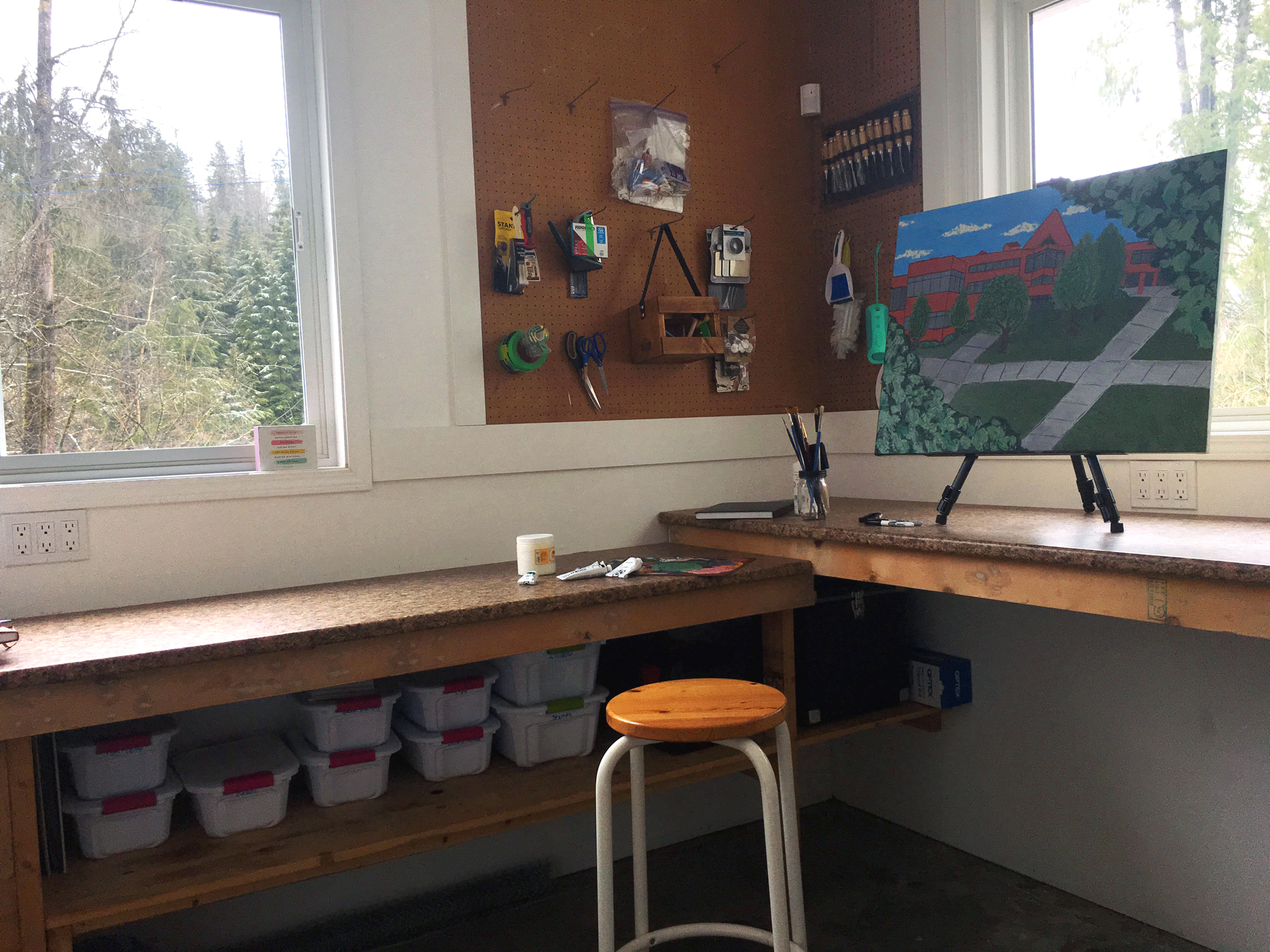
Emilie Kvist got creative when finding a space to work, transforming the unused corner of her garage into her art space.
With the help of her dad, University of the Fraser Valley student, Emilie Kvist transformed an unused corner of the garage. ‘I love that it has two windows and lots of storage under the countertops. I have lots of space to make sculptures too.’
Make sure your area is clear and clean. Given the circumstances, it wouldn’t be overkill to keep a bottle of antibacterial spray handy and to get into the habit of wiping down your surfaces and supplies on a regular basis. This is particularly important if you’ve been out or have brought anything in from the outside world, including new materials which may have arrived in the post.

Organizing is key when trying to maximize your work space. Elizabeth Rogers utilized some kitchen storage for her home studio.
When working in constrained conditions, keeping yourself organized is vital. Thirteen year old Elizabeth Rogers has taken over a corner of her mum’s kitchen storage and points out, ‘Before that, I had a drawer for my supplies but it wasn’t big enough and I had to use the kitchen table. It’s much better having a dedicated area for my materials and work.’
You may want to restrict what you use in each sitting too. As well as freeing up all-important space, imposing such limits can help focus your creative expression.

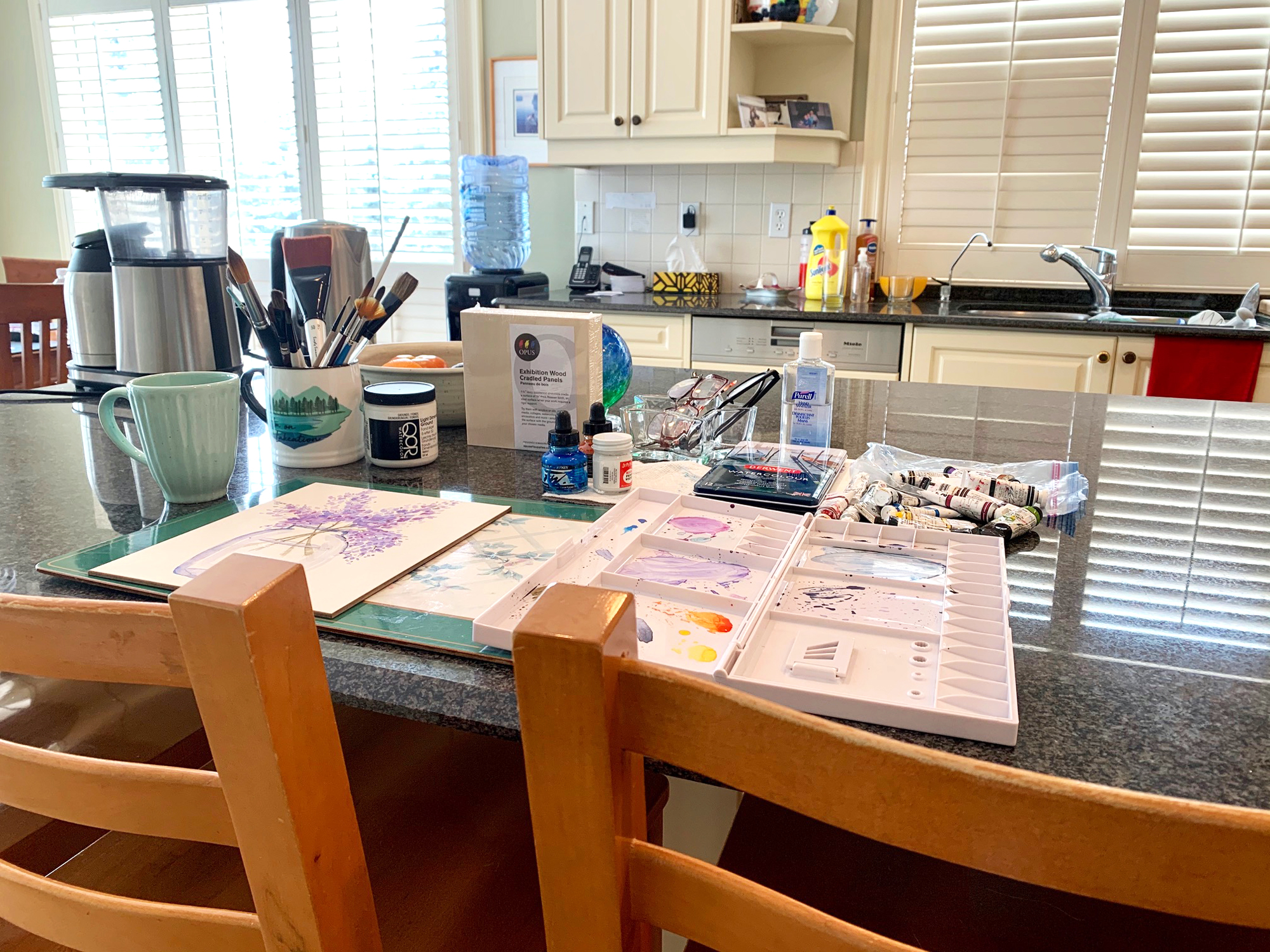
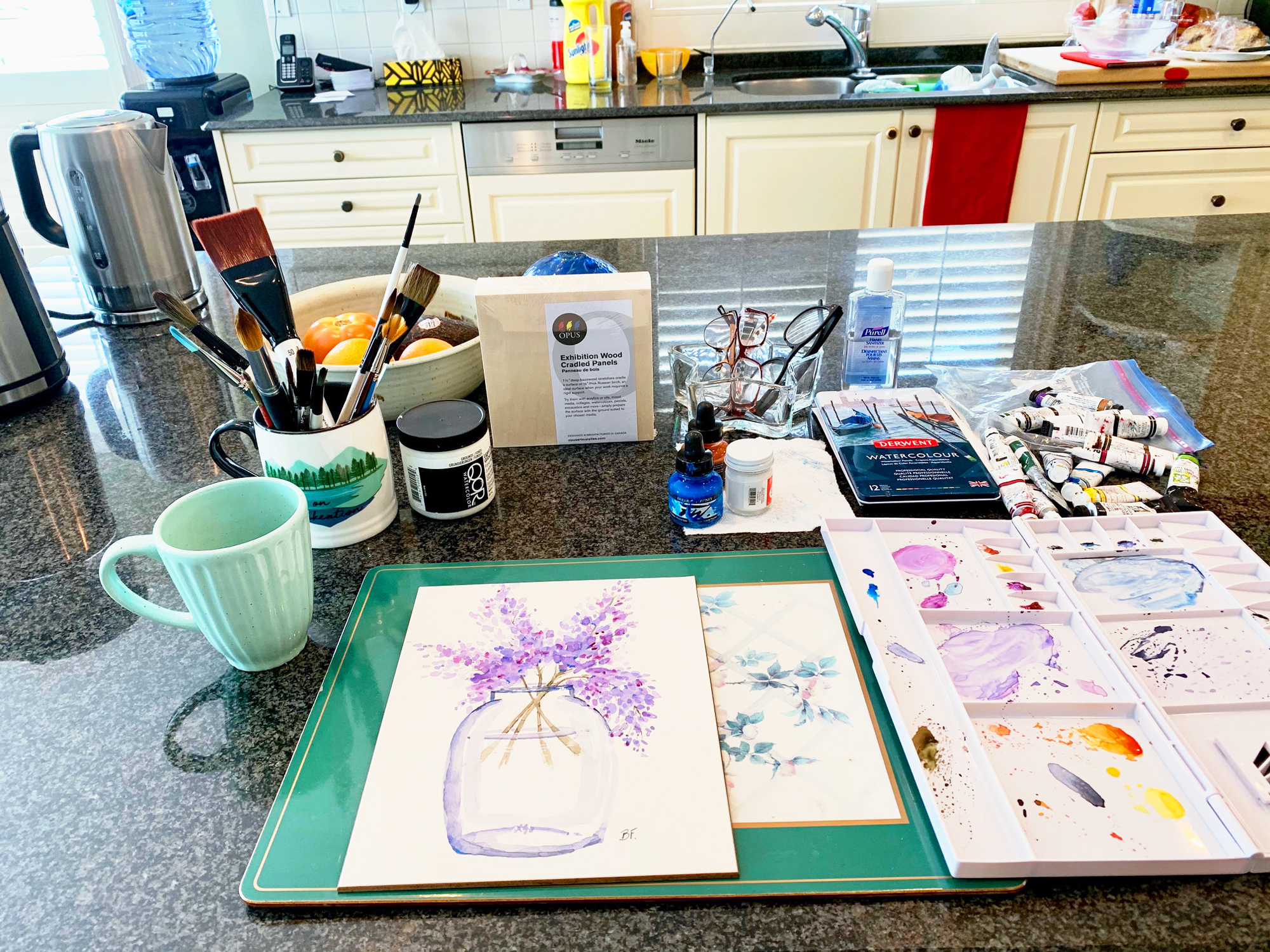
Working in the kitchen of her house, Barb Ferguson has learned to adapt to balance her workspace with the frequently used kitchen space.
Barb Ferguson says, ‘I’ve had to rein in my supplies so they can be tucked under the island quickly, otherwise I risk crumbs in the paint! I cleared out one cupboard (still have to share it with the water bottles!) My essentials: closing paint pallet, cup o’ brushes, plastic storage boxes and dish of reading glasses!’
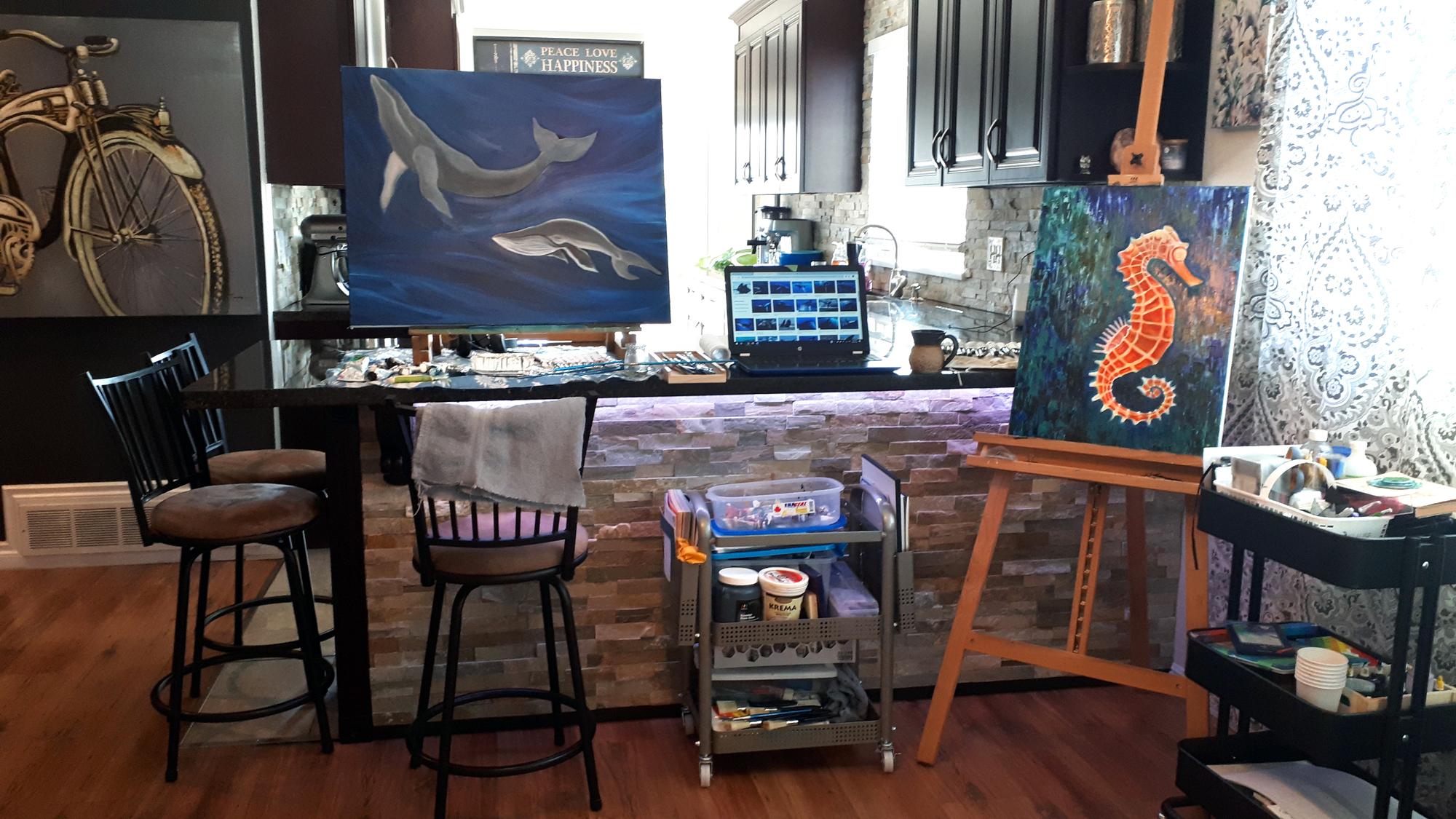
Photo of Sara Boiselle’s dining room studio
Sara Boisselle, who’s transformed a small dining room into a creative space, is enjoying a different experience: ‘I used to pack my materials away and wheel my carts into closets when I finished painting, but social distancing has allowed for more time, more mess and more painting.’
She has some top tips for working at home:
- Get some carts if you don’t have a lot of cupboards or storage space. Having materials in view can spark new ideas.
- Set up the space to make the most of the natural light in your home.
- Establish a time for your daily creative pursuits and stick to, and prioritize it. If it’s hard to stay focused during these unprecedented times try pairing your work time with music, a podcast, documentary or an audiobook. Make some tea, light some candles… whatever makes you happy.
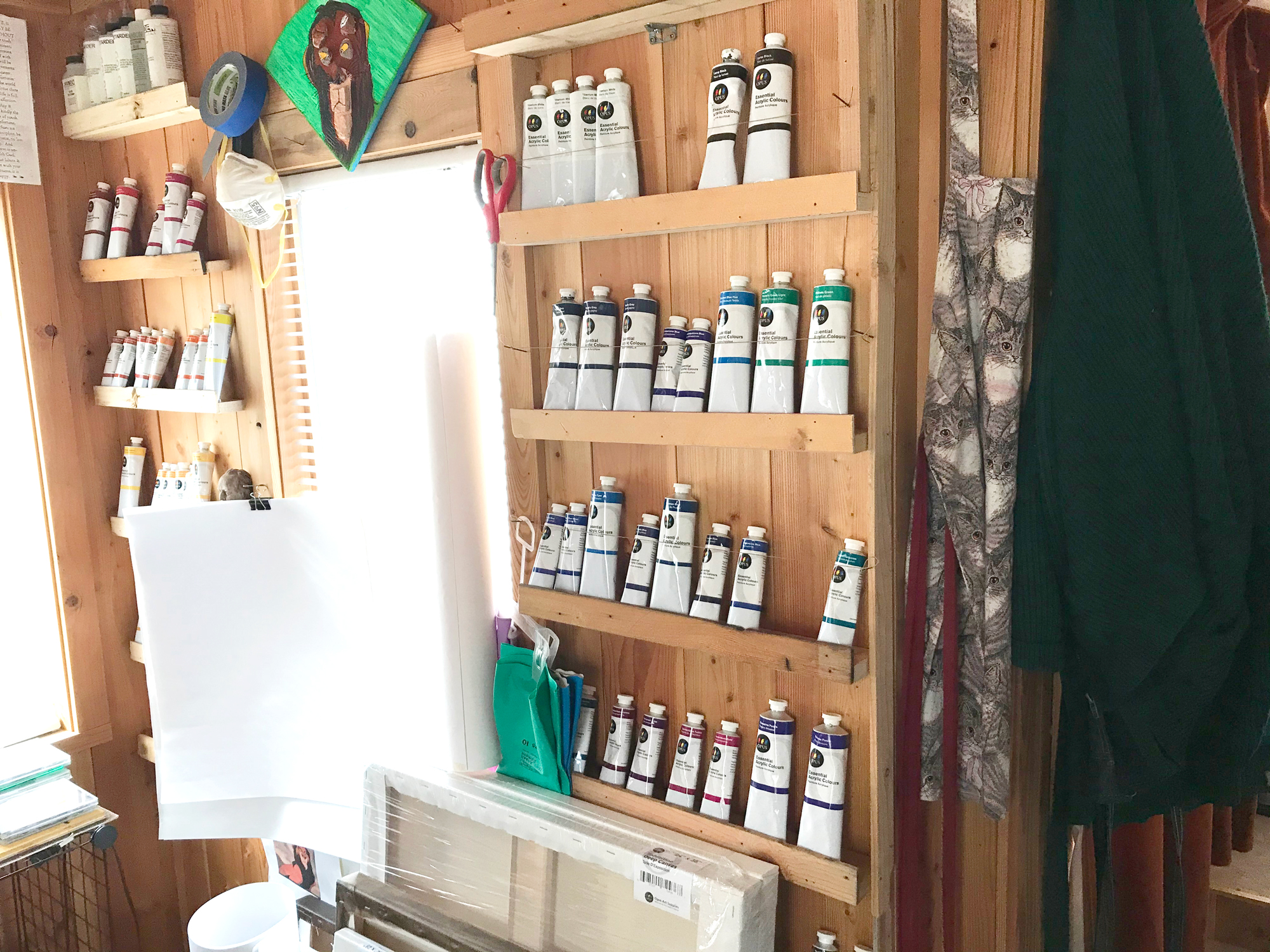
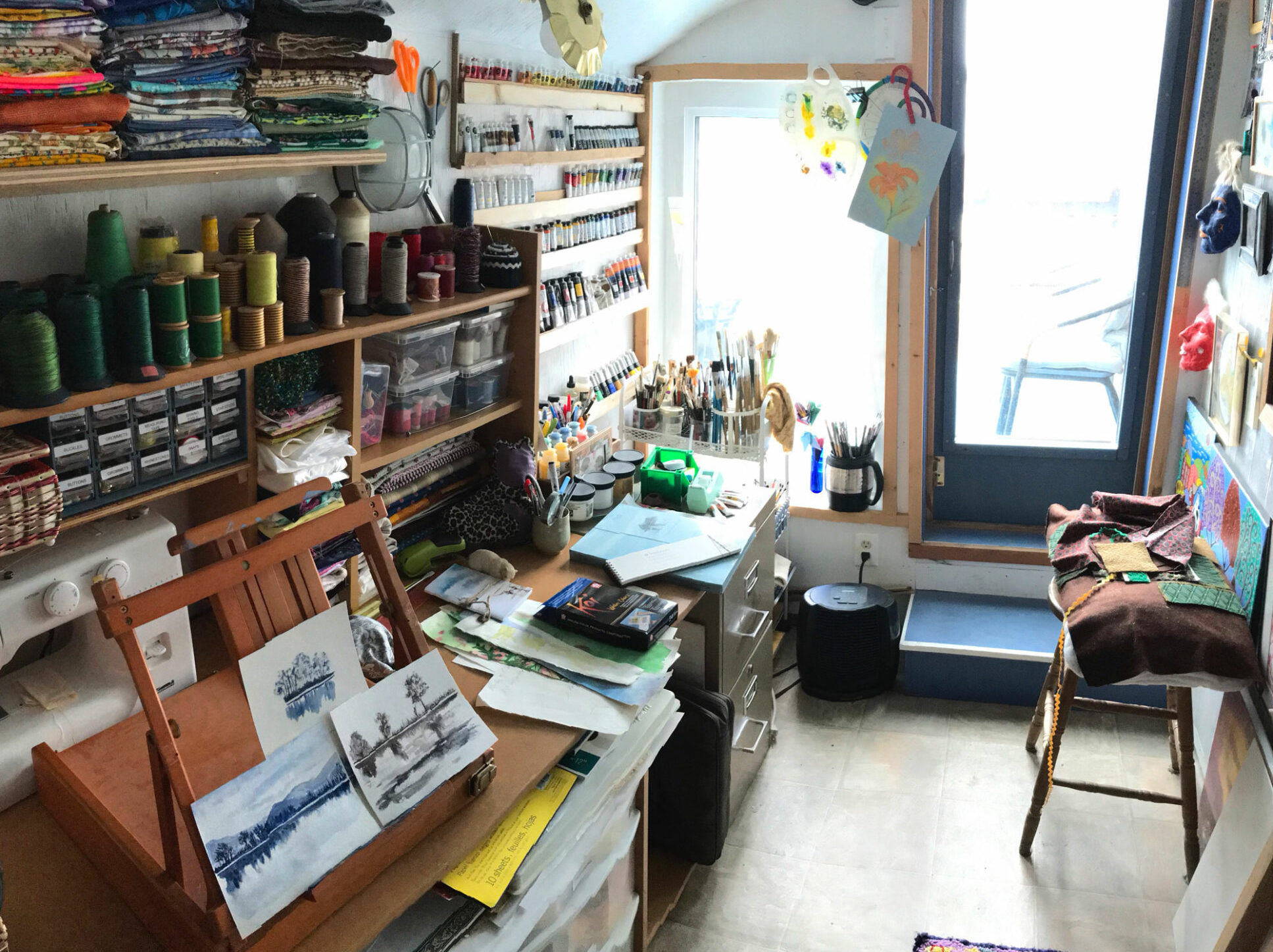
Teresa Fletcher and her husband Larry have converted parts of their home to make room for their art, including turning their front porch into a studio space for both of them!
And don’t forget about safety and physical wellbeing. If you’re painting with oils and self-isolating, you don’t want to bring solvents into the house. Consider using neat oil paints and linseed oil as a safer alternative and set up a simple brush washing station outside – a bucket with a lid, some solvent and a rag could suffice. If you’re short on outdoor space, vegetable oil, soap, water and a bit of elbow grease will also do the trick. With both oil and acrylic, be sure to cover any surfaces you want to protect with a plastic sheet.
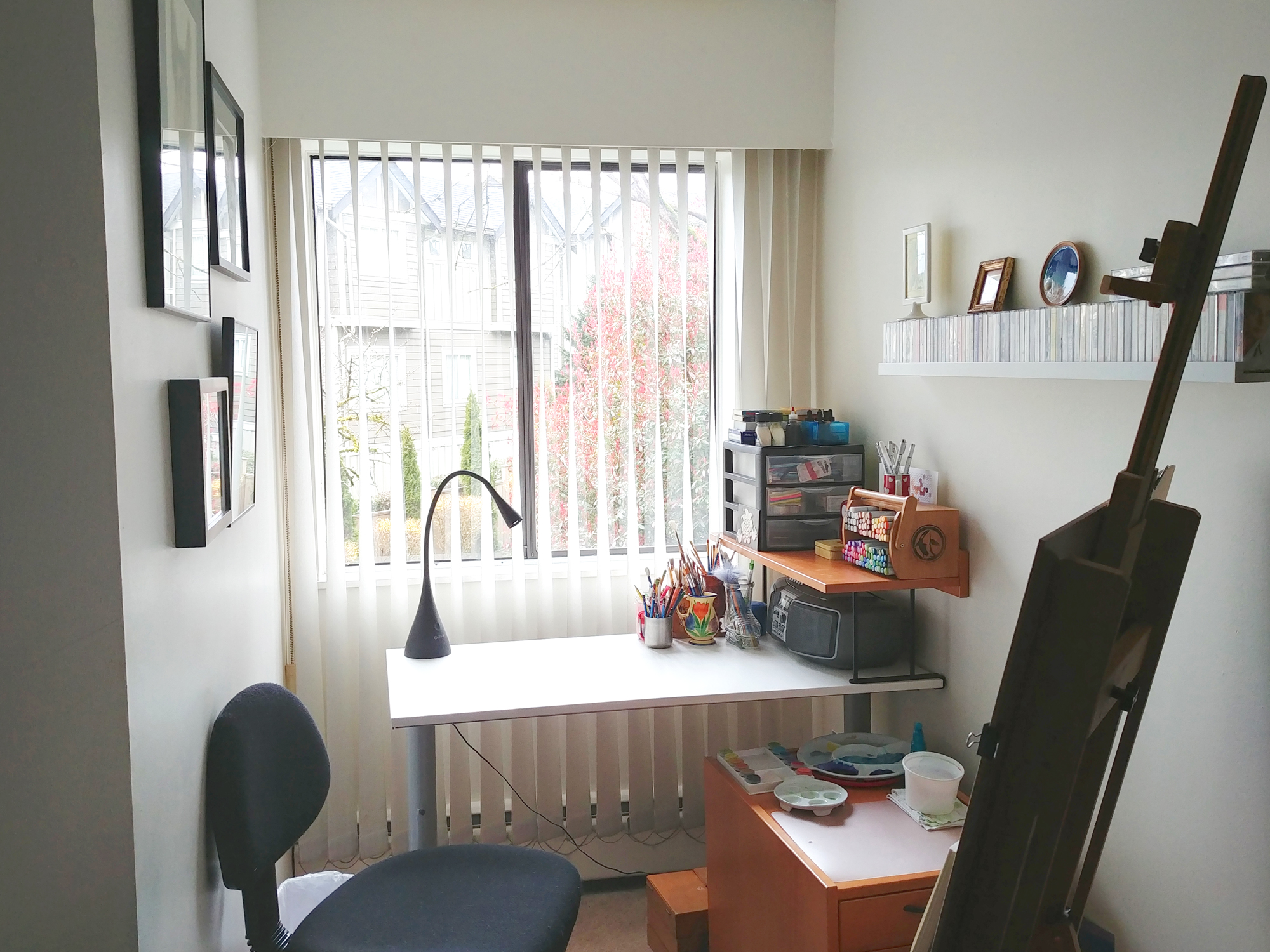
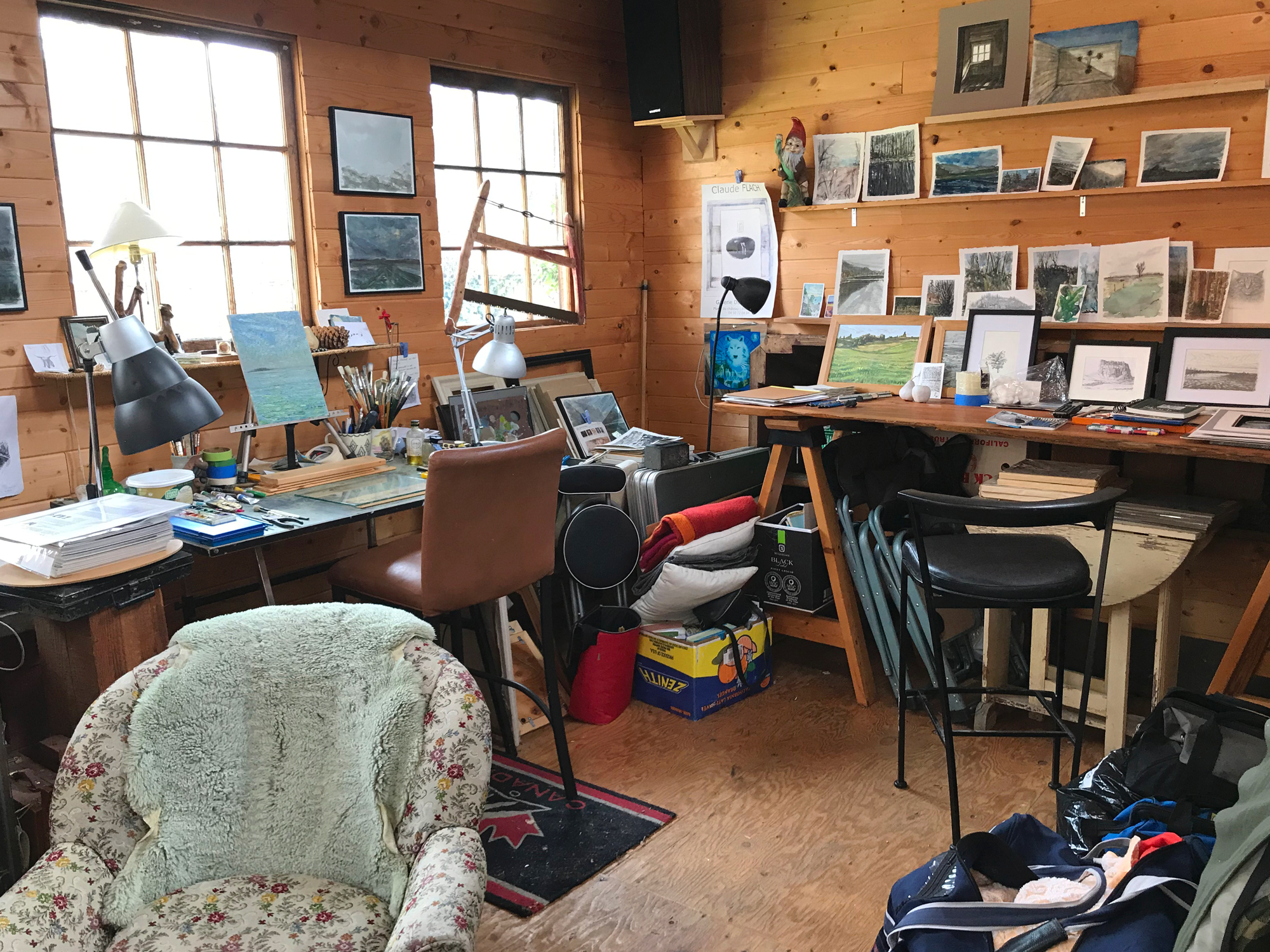
Finding a cozy space, Luz Galindo’s (left) well-lit space is perfect for creating. Mike Masterton (right) put a couple of chairs and tables to use for his workspace and kept a comfy chair away from the space for taking breaks.
Remember to take regular breaks, little walks around the room and some stretching every hour or so. Whether you work seated or standing up, you want to maintain good posture. Your head, shoulders and hips should be in alignment no matter what you’re doing.
Finally, try not to worry too much about outcomes. This isn’t the time to put pressure on yourself to produce enduring and perfect pieces; it’s a moment to improve your state of mind. Approach your work from an angle of pure creativity. Focus on the process, be it that of catharsis, developing new skills, or challenging yourself in unexpected ways.

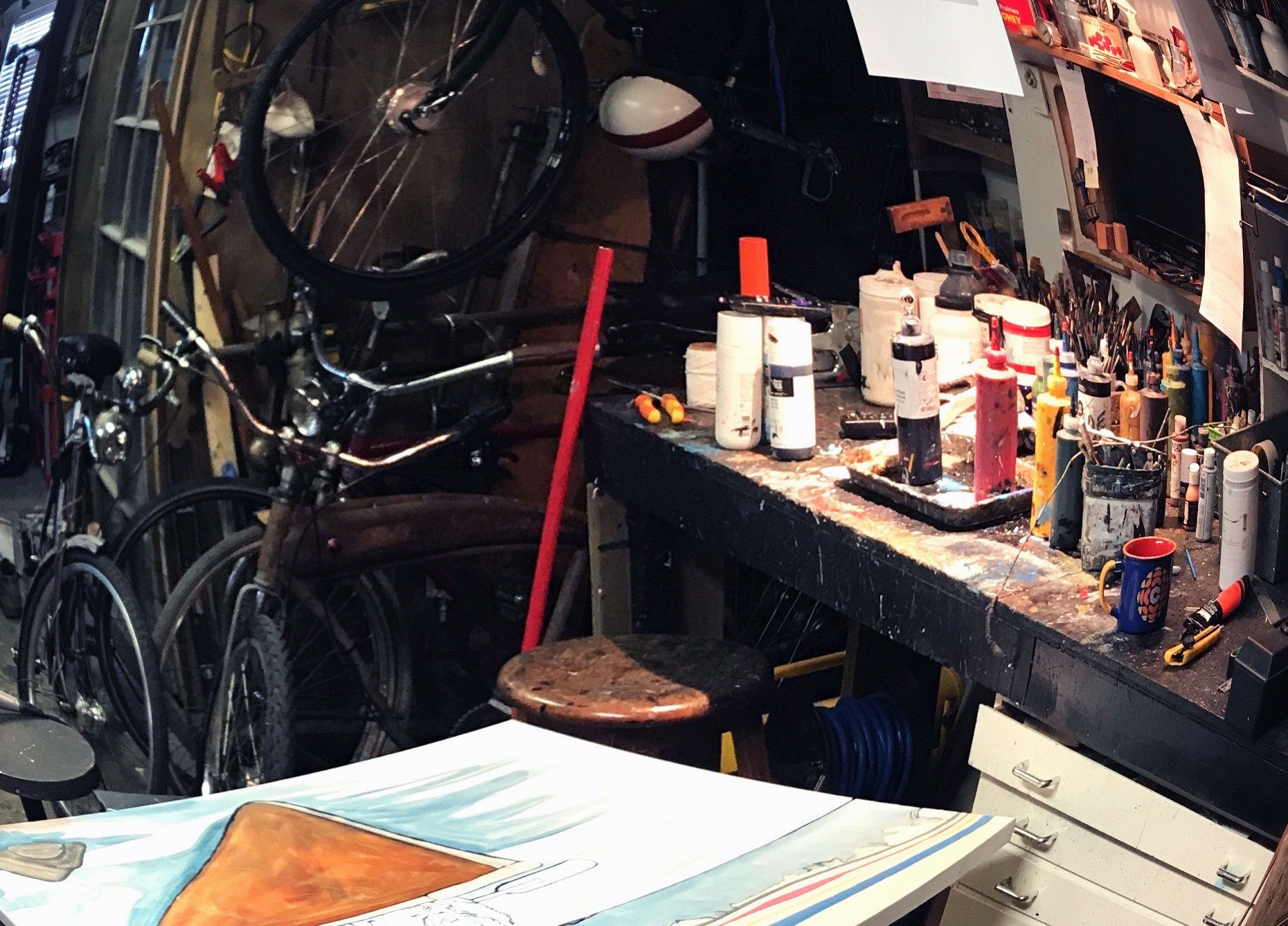
People are finding every nook and cranny to set up an art space – like Timothy Hoey (left), who has parked himself in the garage amongst his bicycles! Some, like Gillian Muir (right), are dedicating most of their bedroom for their creative space.
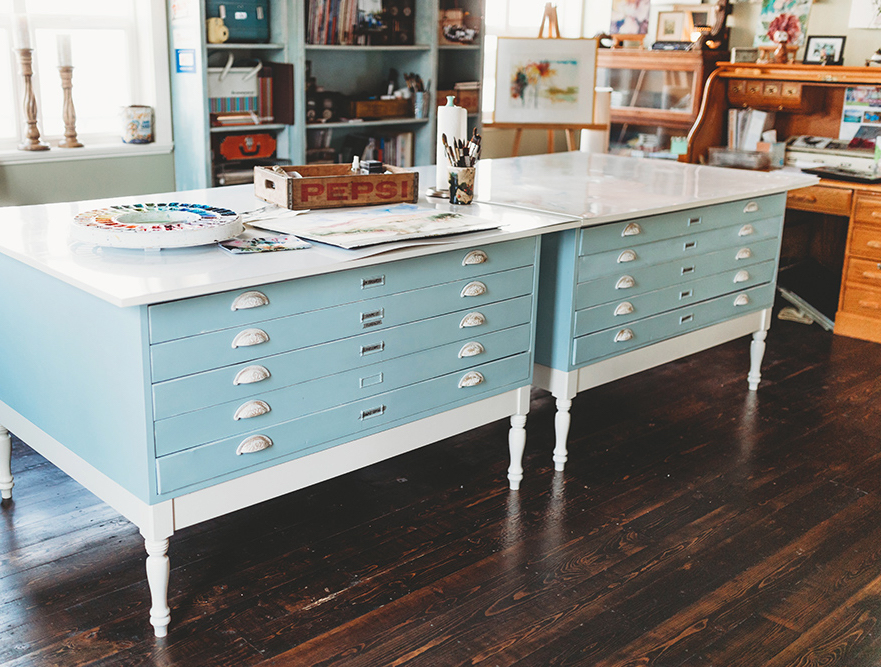
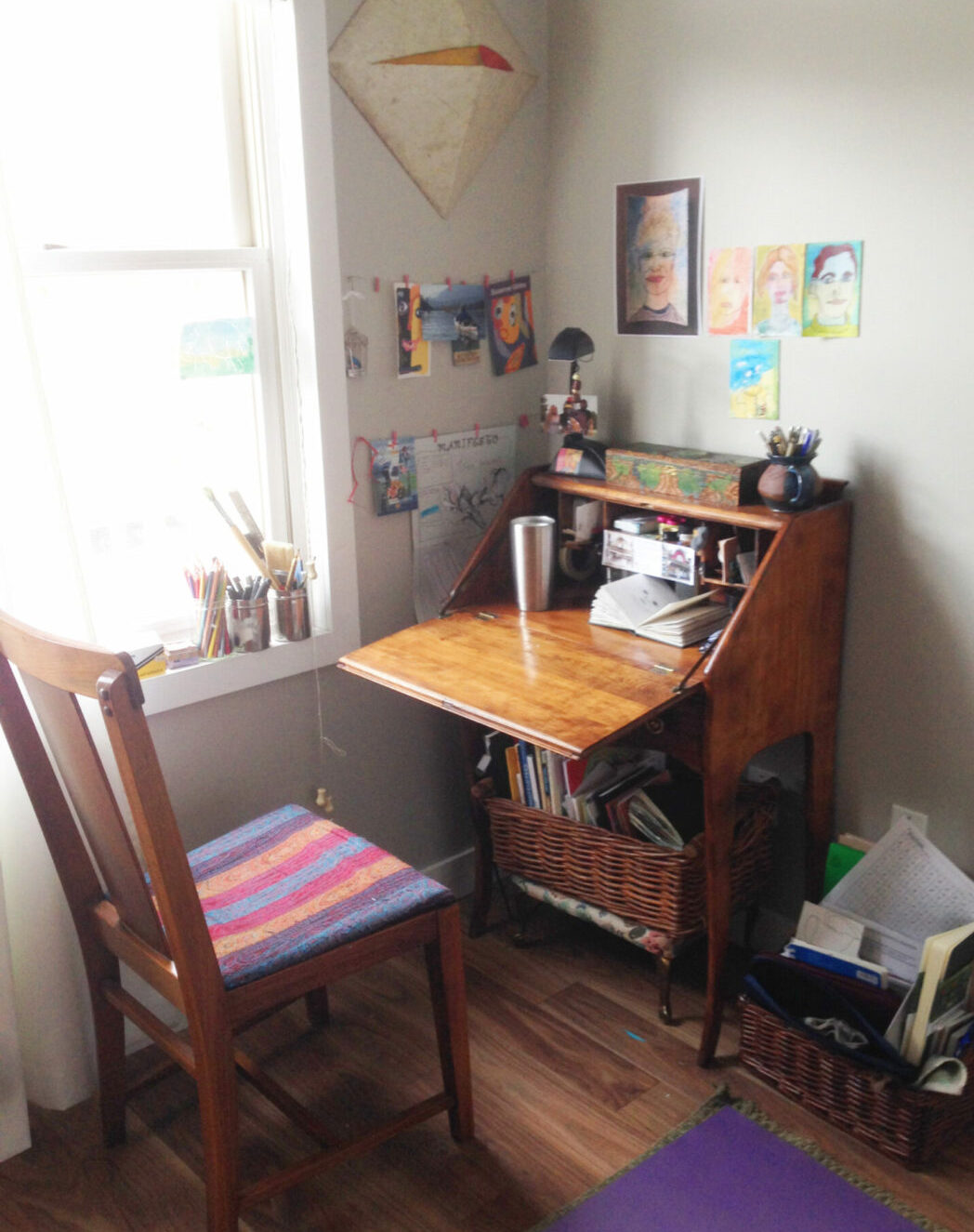
While some are fortunate to find a larger space for their studio, like Angela Fehr (left), some of us have are finding creative ways to utilize our spaces, such as Catherine Forsythe (right), who has utilized a small desk and keeps organized with baskets for storing her supplies.
Next week we’ll be looking at how creativity is helping us cope with these unprecedented times.
Through our art, how can we transform our fears and vulnerabilities into power and courage? Please let us know how you’re getting on! How are you using art to cope with isolation exhaustion, emotional reactions to the news and any additional daily stresses you are feeling as a result of the COVID-19 situation. We want to hear about your different creative endeavours and how they’re nourishing your emotional wellbeing.
Email us at ideas@opusartsupplies.com with the subject line: “Coping through Creativity” to tell us about how you are using art to manage during this difficult time*.
“[Feeling vulnerable] makes you face the experience fully and almost embrace it. Those moments can bring a lot of creativity and make ideas flourish.”
– Marina Willer
Article written by Chloe Battant
